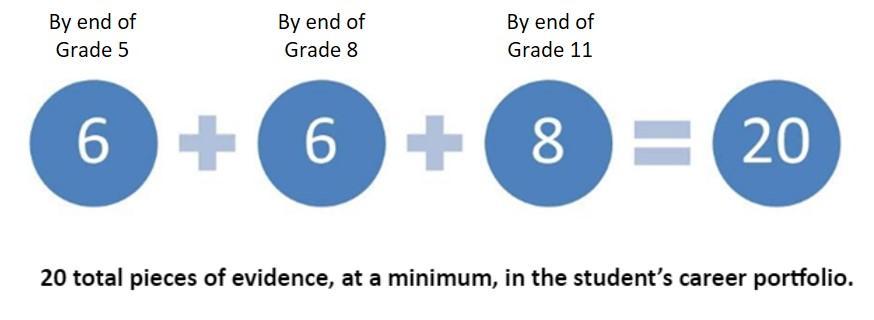Career Readiness Indicators
>
Career Readiness Indicators for
Future Ready PA Index and ESSA Accountability
Purpose
Beginning in the 2017-18 school year, school entities will report student-level data for the Career Readiness Indicator in the Pennsylvania Information Management System (PIMS). Below we provide guidance for evidence collection, monitoring, and reporting students for this measure.
Introduction
By 2025, more than six in 10 Pennsylvania jobs will require some form of postsecondary education or training. In addition, the overwhelming majority of STEM jobs in Pennsylvania (91 percent) will require some form of postsecondary education and training. Currently, 45 percent of Pennsylvanians hold these credentials, and a significant skills gap – especially for “middle skills” occupations requiring some postsecondary training but not a four-year degree – continues to persist for the commonwealth’s current and emerging workforce.
Pennsylvania’s economic future depends on having a well-educated and skilled workforce that is prepared to meet the current and projected demands of a global, knowledge-based 21st century economy. Therefore, it is imperative that Pennsylvania students at all educational levels have access to high-quality academic and technical education, as well as opportunities to assess interests, build skills, and identify and explore careers aligned to those interests and skills. Regardless of their postsecondary plans, all students should leave secondary education with a solid foundation in career education and work.
In 2006, the Pennsylvania State Board of Education promulgated regulations (22 Pa. Code Chapter 4) establishing the state Academic Standards for Career Education and Work (CEW standards) and making the standards required education for all students in Pennsylvania. The CEW standards address four areas of knowledge:
- Career Awareness and Preparation (Section 13.1);
- Career Acquisition (Getting a Job) (Section 13.2);
- Career Retention and Advancement (Section 13.3); and
- Entrepreneurship (Section 13.4).8
In addition, Pennsylvania regulation (Chapter 339) established the development and implementation of a comprehensive program of K-12 guidance services aligned to the CEW standards and requires all school entities to integrate the CEW standards into the curriculum. Since the adoption of these CEW standards in 2006, the Department has worked with educators, administrators, business and industry leaders, and other stakeholders to develop resources to ensure that all students have access to rigorous, standards-based instruction.
Background & Implementation
To help ensure that all students in Pennsylvania are on track for meaningful postsecondary engagement and success, the Department has included a measure of students’ career exploration, preparation, and readiness as part of Pennsylvania’s state and federal accountability system through the Future Ready PA Index and under the Every Student Succeeds Act (ESSA).
The Career Readiness Indicator recognizes efforts to ensure that all students have access to career exploration and preparation activities that are standards-aligned and evidence-based, including the development of career plans and portfolios that help students identify pathways and opportunities for postsecondary success. The Career Readiness Indicator identifies the percentage of students in a reporting cohort who demonstrate meaningful engagement in career exploration and preparation and implementation of individualized career plans through separate, specific measures based on grade level benchmarks aligned to the CEW standards. The benchmarks are as follows:
The Career Readiness Indicator recognizes efforts to ensure that all students have access to career exploration and preparation activities that are standards-aligned and evidence-based, including the development of career plans and portfolios that help students identify pathways and opportunities for postsecondary success. The Career Readiness Indicator identifies the percentage of students in a reporting cohort who demonstrate meaningful engagement in career exploration and preparation and implementation of individualized career plans through separate, specific measures based on grade level benchmarks aligned to the CEW standards. The benchmarks are as follows:
- The percentage of students who, by the end of grade 5, demonstrate engagement in career exploration and preparation aligned to the CEW standards, via PA CareerZone or a locally designed career exploration and preparation program/curriculum. By the end of grade 5, the student has produced six or more pieces of evidence, or at least two pieces of evidence accumulated by the end of grade 3, and at least two pieces of evidence each year in grade 4 and grade 5. Evidence shall be collected in a manner that validates that all four strands of the CEW standards have been meaningfully addressed.
- The percentage of students who, by the end of grade 8, create an individualized career plan and participate in career preparation activities aligned to the CEW standards. By the end of grade 8, the student has a career portfolio containing the K-5 grade band evidence and an additional six pieces of evidence, or at least two pieces of additional evidence in each of the following: grade 6, grade 7, grade 8. Evidence shall be collected in a manner that validates that all four strands of the CEW standards have been meaningfully addressed. One of the pieces of evidence for the 6-8 grade band must be the student’s individualized career plan.
- The percentage of students who, by the end of grade 11, implement their individualized career plan through ongoing development of a career portfolio and participation in career preparation activities aligned to the CEW standards. By the end of grade 11, the student has a career portfolio containing both the K-5 and 6- 8 grade band evidence, and an additional eight pieces of evidence, or at least two pieces of evidence each year, collected in the 9-11 grade band that validates all four strands of the CEW standards have been meaningfully addressed. At least two of these pieces of evidence for the 9-11 grade band must demonstrate implementation of the student’s individualized career plan.
As a part of state and federal accountability, the indicator also aims to promote access and inclusion for career readiness activities for historically underserved students, including English language learners, students with disabilities, economically disadvantaged students, students of color, and students in nontraditional fields.

